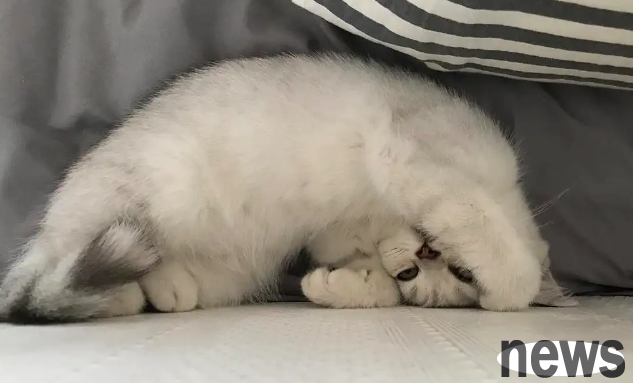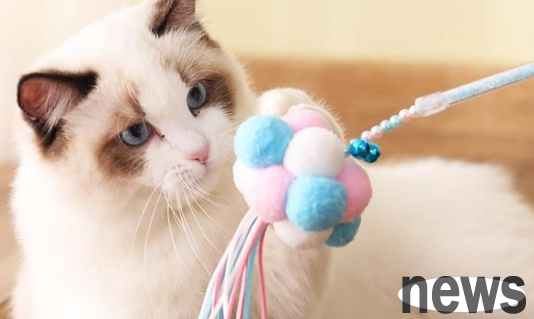Urine indicates cat disease, judge the cat's physical condition from urine! As a body excrement, urine has a good indication of some abnormal conditions in the metabolism and operation of the cat. Especially for a careful owner, he can often judge what disease his cat has by observing the cat's urine. The observation method of urine can usually start from the color and smell.

1. Urine color
Colorless urine may be a signal of diabetes, chronic interstitial nephritis, and diabetes insipidus. If it is not because of drinking too much water, attention should be paid to the identification.
White urine is commonly found in purulent urine, chylour and salt urine. Purulent urine is caused by severe urinary tract suppuration infection, and the urine is milky white. Purulent urine is commonly found in pyelonephritis, cystitis, renal abscess, urethritis, or severe renal tuberculosis.
Chyluria is one of the main symptoms of filariasis, and the urine is as white as milk. Because the chyloli (liquid after fat saponification) absorbed by the intestine cannot be drained from normal lymphatic vessels into the blood circulation, it can only flow back to the lymphatic vessels in the urinary system, causing the pressure of the lymphatic vessels in the urinary system to increase, varicose and rupture, causing the chylolili to overflow into the urine, and chylopidia occurs. Cylouria is generally paroxysmal. When there are red blood cells in chyloma urine, it is called chyloma hematuria. Salt-based urine is often found in young cats. It is common in winter. The urine is like rice soup, which is mostly caused by a large amount of phosphate or urinary hydrochloric acid. It is easy to precipitate after being placed. If the urine is placed in a bottle and heated, it will immediately become clear. Salt urine is a normal physiological phenomenon. You can cure without medication. The key is to drink more water.
Yellow urine means that the urine is yellow or dark yellow. The reasons are: during the process of taking carrots, taking riboflavin, dystrophin, metronidazole, rhubarb and other Chinese and Western medicines, the urine may turn yellow. Once it is stopped, it will disappear immediately without worrying.
Common cats with fever or vomiting and diarrhea will concentrate and reduce urine because water is excreted with sweat or feces, and the urine pigment does not change, so the urine color will appear yellow.
Another type of urine that looks like strong tea is not due to the above reasons, but the liver or gallbladder has lesions. It turns out that there are usually two paths for bile to drain out: one out of the urine and the other out of the intestine. When the liver or gallbladder is sick and the path from bile to the intestine is cut off, it can only be excreted from the urine, and the urine becomes dark yellow due to the increase in bile content. In the early stages of hepatitis, jaundice has not yet appeared. We can often see that the color of the urine is like strong tea, which is often a signal of hepatitis. In addition, yellow and turbid pyuria is a manifestation of purulent urinary organs.
Blue urine can be seen in people with cholera, typhus, as well as primary hypercalcemia, and vitamin D poisoning. However, this color of urine is mostly related to taking medication and is not caused by diseases. If the diuretic amphetopteridine is taken, it can occur after injection of methylene blue injection or taking melanin, indigo, wood distillate, and salicylic acid. Stop the medicine and disappear. This blue urine caused by taking medicine is a normal view without worrying.

Black urine (like the color of soy sauce) can be seen in acute nephritis, acute icteric hepatitis, kidney squeeze injuries, large-scale burns, hemolytic anemia, mistyped blood transfusions, and even after strenuous exercise, the urine can also be similar to soy sauce.
2. Urine smell
Of course, cats have abnormal urine smells that need to be different from normal urine smells. The unique smell of cat urine originates from a compound called cat uranine. Cat uranine can be decomposed into "MMB sulfur". Tomcats use MMB sulfur as pheromone to make female cats know that they are ready to mate. The bacteria in cat feces usually turn uric acid into ammonia, giving urine a odor. Bleached clay absorbs water in cat urine and reacts with ammonia to form a series of acid substances, thus forming cat urine.
The appearance of ammonia odor indicates that the urine has been decomposed in the body, which is a manifestation of cystitis or urinary retention.
The fragrance of apples is more common when diabetic acidosis or hunger, and this urine can often attract ants to gather.
The slander and fishy smell is common in cystitis and purulent pyelitis.
The fecal odor is caused by bladder and colon impotence, and the urine often has a fecal odor.